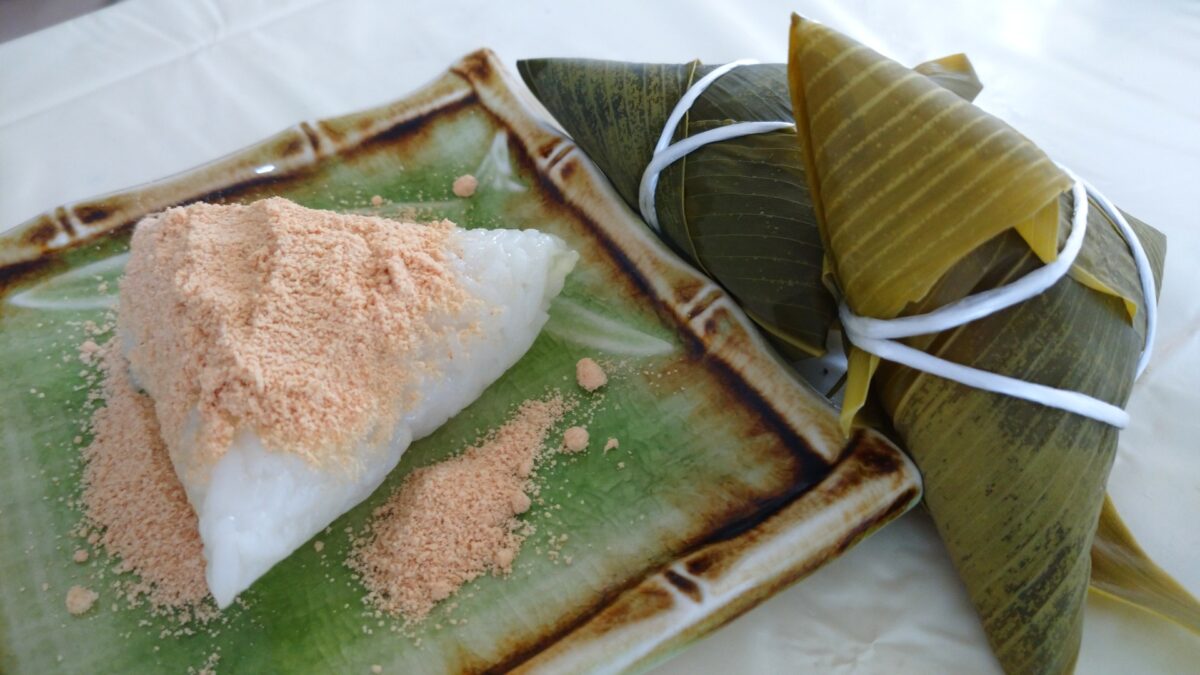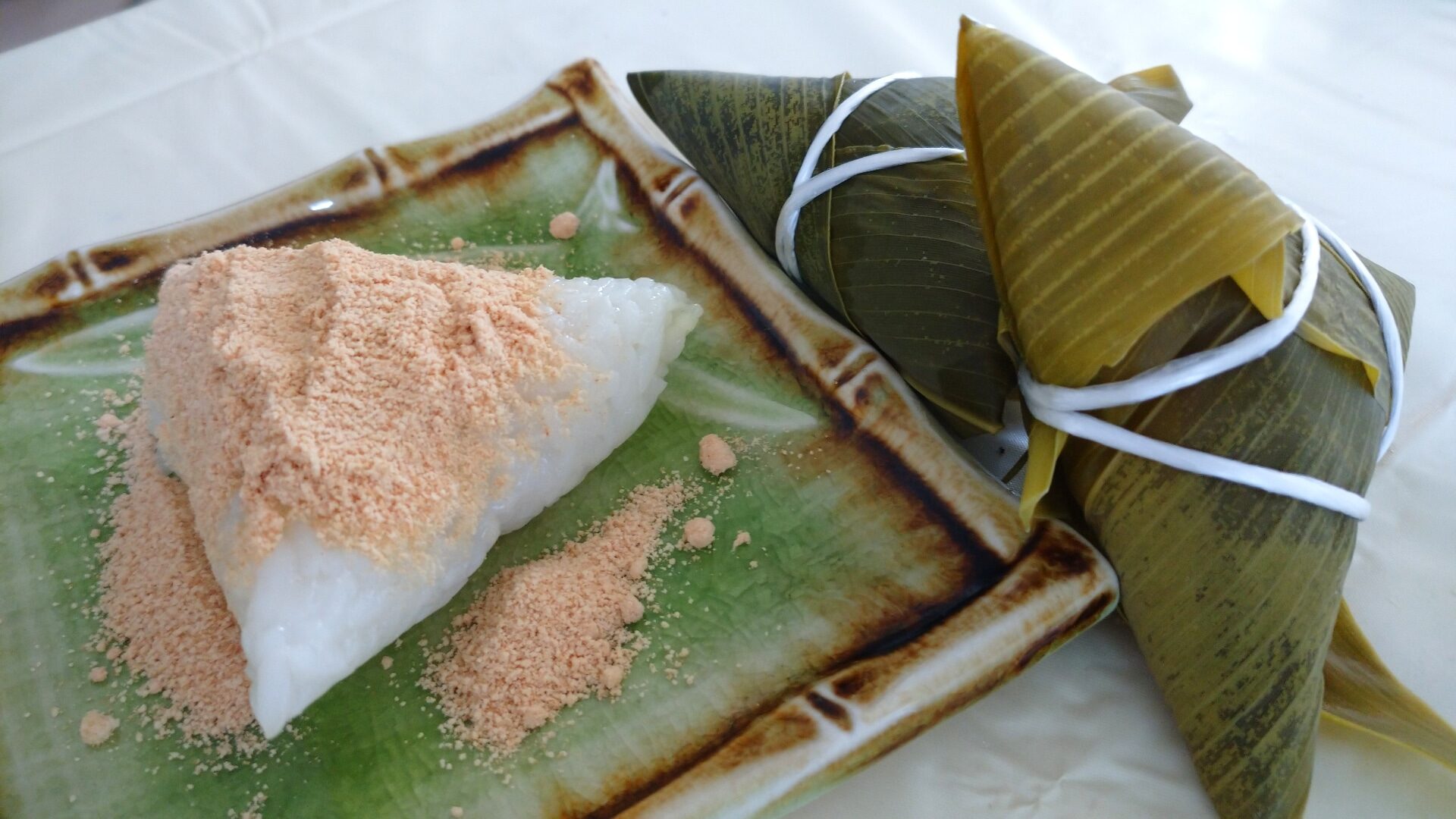
Howdy folks! Ever heard of a little something called “Sasamaki”? It’s a tasty morsel wrapped in bamboo grass that’s been a local favorite up here in Akita for ages. Think of it as a sweet little package of tradition. Let me unwrap the story for you!
Dish Name: Sasamaki
- Region / Location: Akita Prefecture (throughout the prefecture).
- Primary Area of Tradition: Throughout Akita Prefecture.
- Main Ingredients: Glutinous rice (mochigome), bamboo grass leaves.
How It’s Eaten / Served
The fun starts when you unwrap the bamboo grass leaves! Inside, you’ll find the sticky rice cake. The typical way to enjoy Sasamaki is by dusting it generously with kinako (roasted soybean flour) that’s been mixed with sugar. The way the Sasamaki is wrapped varies from place to place. For instance, using three leaves makes a longer roll, while two leaves make a shorter one. You’ll even see different shapes depending on the region – small triangles in Misato Town, slender triangles in Yurihonjo City, and flat triangles in Senboku City. Besides keeping the rice fresh, the bamboo leaves also give the Sasamaki a lovely, refreshing aroma.
Cultural Background and Preservation
Sasamaki is a traditional food made by wrapping glutinous rice in bamboo grass leaves, tying it with rush, and then steaming it. While it’s known as “chimaki” in many parts of Japan and often wrapped in bamboo sheaths, Akita, along with Niigata, Yamagata, and the Aizu region of Fukushima, uses bamboo grass leaves. Interestingly, kuma-zasa (a type of bamboo grass) has long been used in folk medicine for its supposed healing properties. The leaves themselves are said to have antibacterial and preservative qualities, making them perfect for wrapping food for storage or carrying. Since glutinous rice used to be a bit of a luxury compared to regular rice, Sasamaki became a special treat for celebratory occasions, a testament to Akita’s rich rice-growing culture.
Back in the day in Akita, Sasamaki was often made for the Tango no Sekku (Boys’ Day festival) and sanaburi, a celebration after rice planting. When rice planting was all done by the women, daughters of farming families would return to their parents’ home for a “sanaburi break,” and they would bring Sasamaki as a gift from their husband’s family.
These days, you can get a taste of this tradition by joining a Sasamaki-making workshop, like the ones at the “Kaikon no Sato” farm guesthouse or in the Yuwa area of Akita City, where you even get to pick the bamboo leaves yourself! You can also find Sasamaki being sold at supermarkets and roadside stations in the southern part of the prefecture, and they even ship it nationwide, so folks all over can enjoy a little piece of Akita’s tradition.
Additional information:
- Mochigome (もち米): Glutinous rice, also known as sticky rice, is characterized by its chewy texture when cooked. It’s often used in traditional Japanese sweets and celebratory dishes.
- Kuma-zasa (クマザサ): A type of bamboo grass (Sasa veitchii). It has broad leaves and has been used in traditional medicine and for wrapping food due to its perceived health benefits and preservative qualities.
- Kinako (きな粉): Roasted soybean flour. It has a nutty flavor and is often used as a topping for mochi and other Japanese sweets.
- Tango no Sekku (端午の節句): Also known as Boys’ Day or Children’s Day, it’s a traditional Japanese festival celebrated on May 5th. It’s a day to pray for the health and success of boys.
- Sanaburi (さなぶり): A traditional celebration held after the rice planting season is completed. It’s a time for farmers to rest and celebrate their hard work.
The information about regional cuisine featured on this website (Piggy's Grandma of Japan) is summarized and adapted from the Ministry of Agriculture, Forestry and Fisheries of Japan (MAFF) website, "Our Regional Cuisines"Additional commentary is provided based on the unique experiences and perspectives of the site's editors.
The copyright for the original content regarding regional cuisine belongs to the Ministry of Agriculture, Forestry and Fisheries of Japan.
The summaries and adaptations published on this site are intended for informational purposes only. Piggy's Grandma of Japan does not guarantee the accuracy or completeness of this information. For the most accurate and complete details, please refer to the original pages on the MAFF website.



